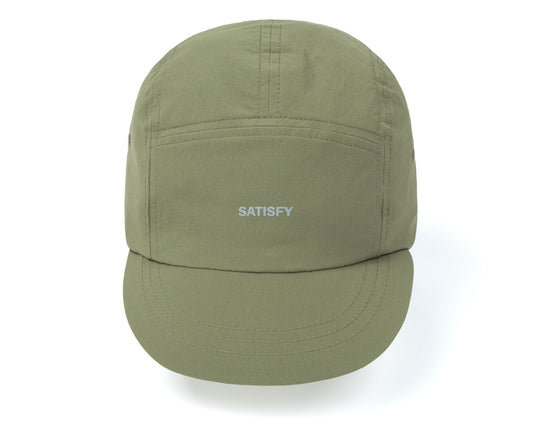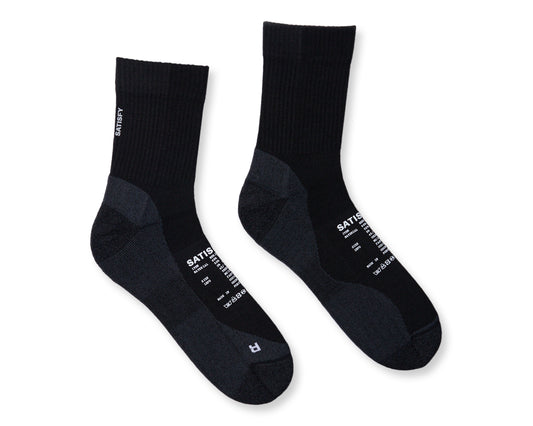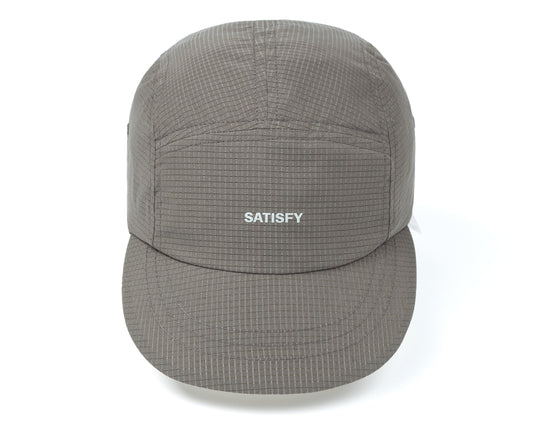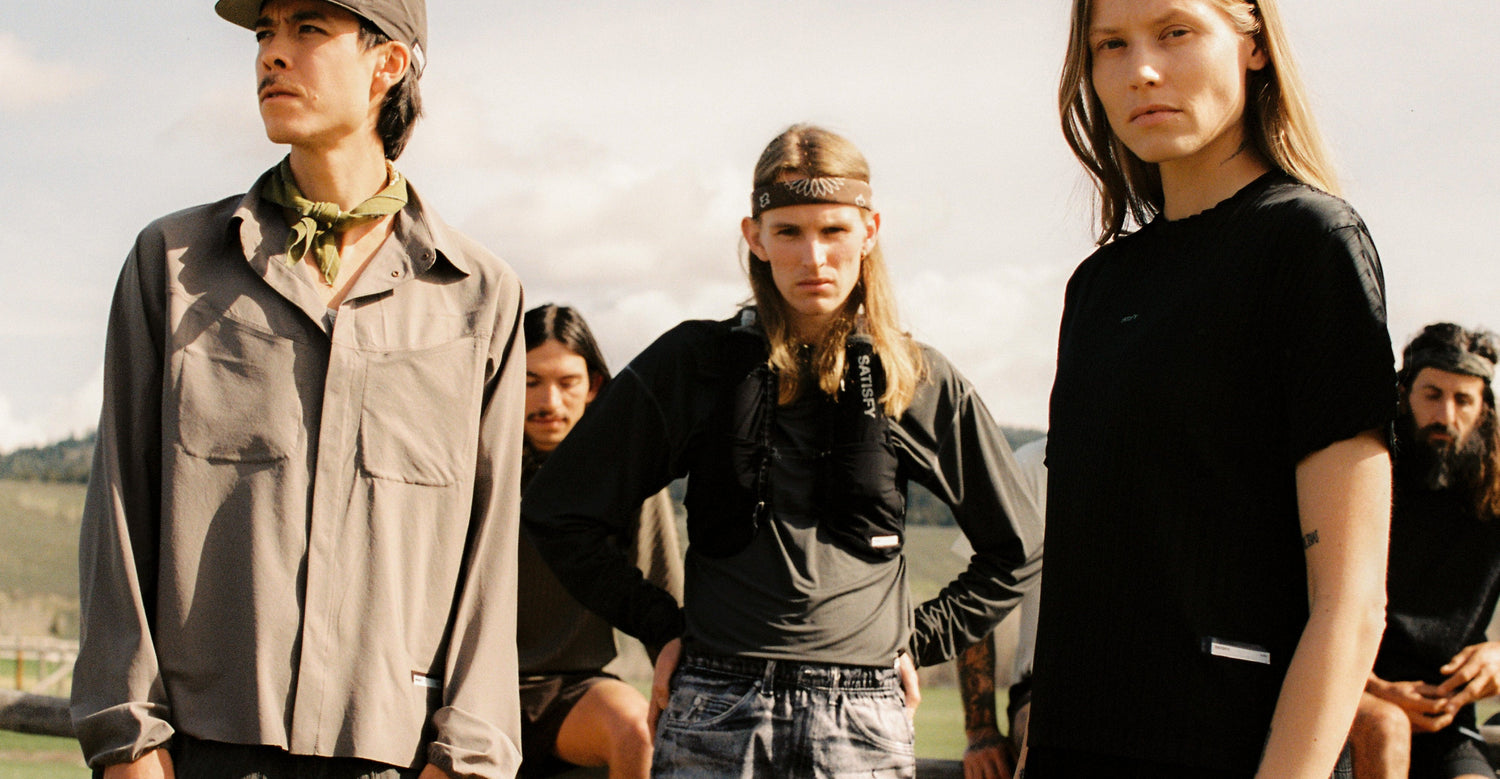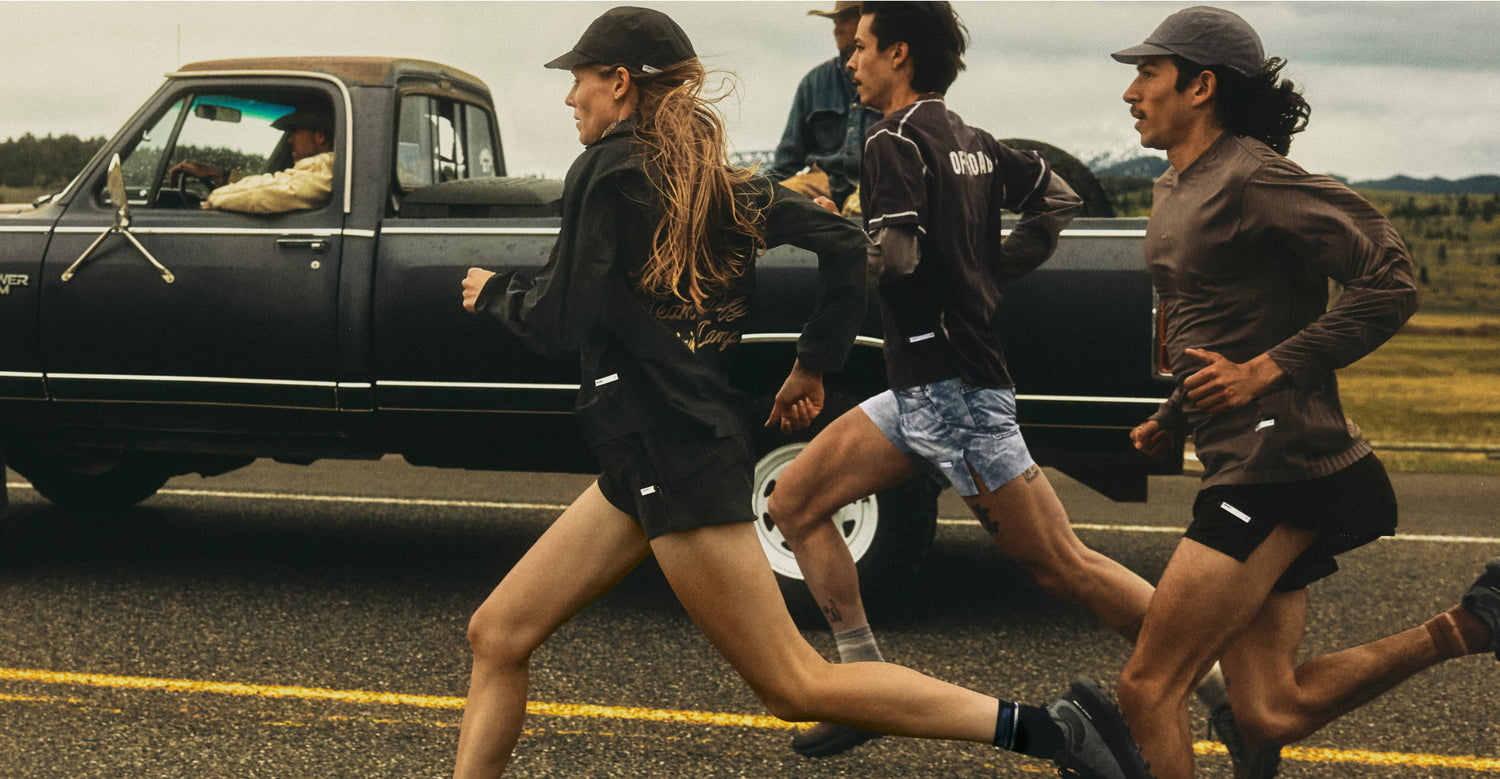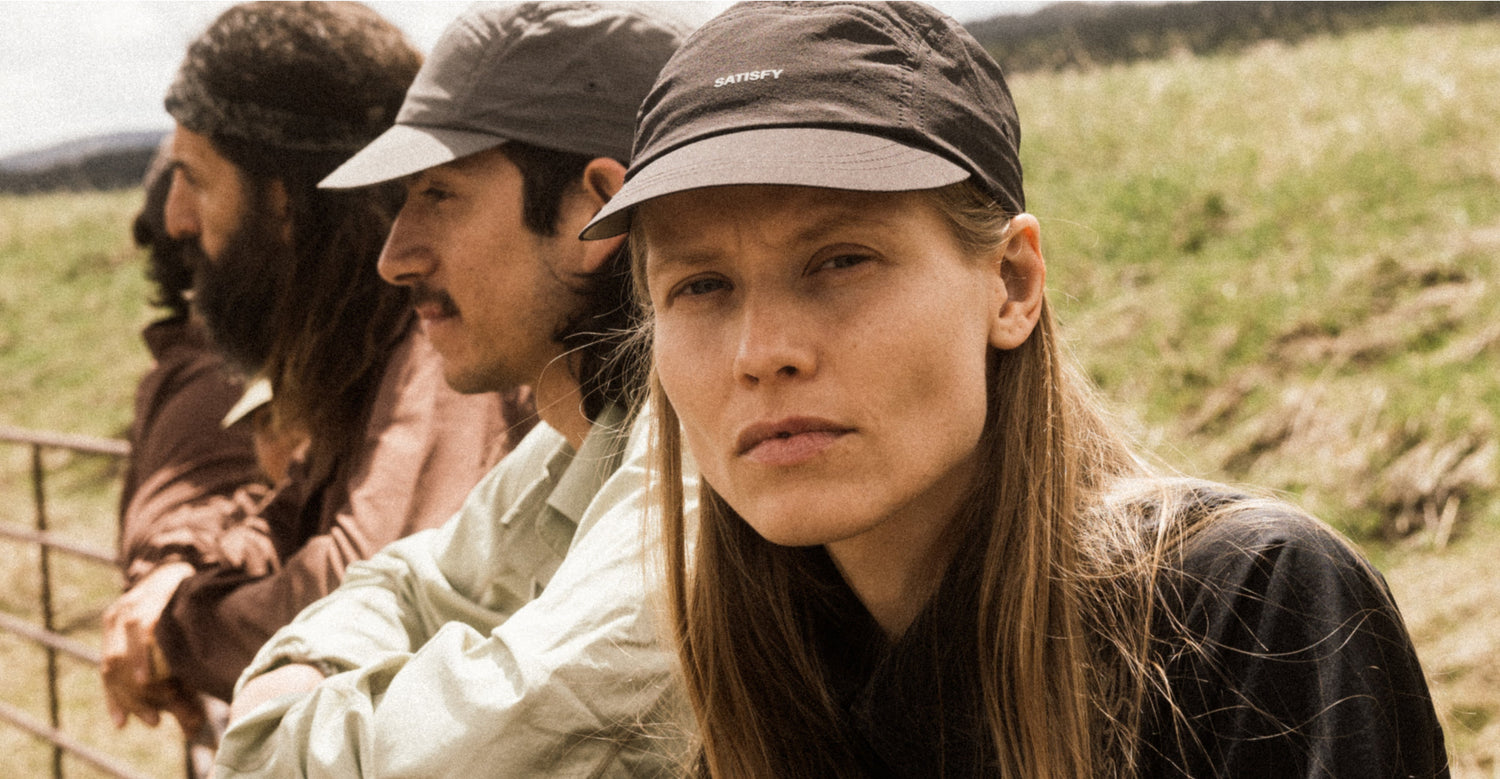
SATISFY pro athlete Mike Versteeg is a punk. He might not have a safety pin through his nose, and he may not sniff glue, but his life and running career have a strong focus on being true to himself, and, as you will find in the following conversation, he lives and dies (and bruises his ribs) by the DIY credo.
Mike began running in 2012 and quickly proved himself to be a fast-footed natural. In 2013, he won his first ultramarathons (Capt’n Karl’s Colorado Bend and the Flagstaff to Grand Canyon Stagecoach Line) and has continued to bring home the gold ever since, with wins at Telluride, Black Canyon, Cocodona, and more. Despite his many victories, Mr. V has never gotten too caught up in the running mainstream and its enervating expectations. Instead, he has beaten a path that places very little importance on the conventional markers of success. Nonetheless, the road has led him to the good life: he has a family, a home, and a mini ramp of his own. We gave him a call in Prescott, AZ.
Photography: Pierre David



‘I should not be anywhere in the room when it comes to anything like customer service... luckily, with Saddles, the brutal honesty and cynicism I bring have been turned into a successful marketing campaign.’
Mike, what were you like growing up? Were you a punk kid? Because this is kind of like the Mike V is a Punk interview.
‘Mike V’ me or ‘Mike V’ Vallely?
[laughter]
No, no, I mean you, the other Mike V.
Well, during my teenage years, I was skateboarding every day, listening to Sublime or something, and playing Tony Hawk. That was me as a thirteen/fourteen-year-old. And then, in my later teen years, I started playing music and kind of moving away from skateboarding.
Were you a punk kid?
I was never super into the quote-unquote punk scene, but I got pretty into the hardcore scene during that time. Like, when I was eighteen or nineteen years old, the hardcore scene was taking off and had evolved from the punk scene a little bit.
What bands were you into?
Bane, Poison the Well, American Nightmare, those sorts of bands, and also the bands around Prescott at the time that were playing that kind of music. That was sort of like high school days. I also really loved Thursday and music like that, sort of post-punk.
Emo-ish stuff?
Yeah, like, emo, post-punk stuff.
And you were playing music around then. What was your first band called?
Oh, God. That's a good question... I think it was The Massacre, maybe?
That's a good name.
And then, into my 20s, I kind of stayed in the music scene. But after a while, I sort of gravitated away from playing music with other people.
Why?
Sitting in a room with other dudes... I've never been able to, like, navigate that appropriately. I mean, to me, the hardest part of making music is navigating the dynamics of others. And oftentimes, good, creative musicians are not personable people. So, you're taking these weird, anti-social, quirky people and putting them all in a room together and saying, ‘Okay, behave, be social, and collaborate with each other.’ But I've never in my life been able to navigate that. So, I've mainly just played my own stuff, played by myself, and made my own recordings and things like that. I don't really ever play publicly.
No?
Not really. I’ll very occasionally play a show with somebody. Like, at Saddles last year, my friend Ben, who is a drummer; we played an hour-long set together. But it's very rare that I'll do that.
Speaking of Saddles, how did that race come about?
Well, as long as I've been trail running, I always thought it’d be really great to have a 100-mile race in Prescott; it's always been in the back of my mind. But as far as actually being pushed to do it, I was helped by SATISFY. They were talking about how they wanted to explore doing events, and once I knew that—once I knew I had their support—I went forward with actually trying to make it happen.
What’s it like putting a race together?
It's a lot more work than you realize. I have to sit down and have meetings with, like, the chief of police, the tourism board, and the health department. I’m the guy getting questions thrown at him about the economic potential of Saddles. So, in order to sell it to the city and the board of tourism, I have to act like it can be this thing, but little do they know it’s the black sheep of ultra running.
How do you go at those city meetings?
I'm not a great person for doing that. Like, I should never be in the same room with the chief of police, you know what I mean?
[laughter]
And I should not be anywhere in the room when it comes to anything like customer service or things like that. But luckily, with Saddles, the complete lack of customer service and the brutal honesty and cynicism I bring have been turned into a successful marketing campaign.
[laughter]
So, it’s like the more that I lean into that or the worse job I do for customer service, the more people think it’s cute, so that’s good. But in reality, I’m not a great person to be having conversations with the Forest Service or the BLM [Bureau of Land Management] or things like that. So that’s been me learning how to smile in front of people, you know what I mean? I’ve learned how to sort of navigate those waters a little bit.

‘...as long as I've been trail running, I always thought it’d be really great to have a 100-mile race in Prescott; it's always been in the back of my mind.’
Why is it called Saddles?
There are a few different answers to that. One is the geographic term ‘Saddles’ because that’s sort of what the route is. A saddle is a low spot between two peaks, two mountains, and, essentially, the route does a big loop around Prescott, and you're running up and over and through a dozen different saddles.
Gotcha.
And then also, you know, having grown up in this town—I haven't lived here my whole life, but I'm back living here now—and with the whole Western thing and the cowboy thing, like, I’ve kept that at arms distance, but I also realize that a race in Prescott can have aspects of it that incorporate the cowboy thing, because Prescott really is—as far as, like, western cowboy history and all that stuff—one of those places that embraces that history. So, ‘Saddles’ was a geographic thing, and then I think a lot of people see the word ‘Saddles’ and they associate that with horses.
Right, the cowboy vibe.
I also just like the way that it sounds.
Yeah, it feels good to say: Saddles, Saddles, Saddles. Dude, tell me about your man cave. You've got a barn, right?
Yeah, the barn is very much all the things: there’s a climbing wall, fifteen guitar amps, drums, and, you know, it's very much a music space.
And a mini ramp?
Yeah, but not in the barn—the ramp is next to the barn. So, you know, it’s just your typical midlife crisis thing: skateboarding, playing music, rock climbing, wood fire stove, hang out...
What are the dimensions on the mini ramp?
It’s not a huge mini ramp. It’s 12’ by 24’ by 4’.
Nice. And what was your first serious skateboard? I'm assuming you must have had, like, a supermarket board originally, but what was your first legit deck?
Oh, god, that’s a really good question... I want to say the first deck I had was, like... I was pretty into Jamie Thomas. I thought he was cool. I thought Jeff Rowley was really cool, too...
So, maybe a Flip deck.
Well, I remember definitely having, like, a Zero board... But I think I also had a World Industries board earlier on... It was probably a World Industries board because I think when I first got into skateboarding, I was really into Wet Willy and... What was the other one?
Flameboy?
[laughter]
Flameboy, yeah. I remember drawing those on my notebooks at school. So, it was probably a World Industries deck or something like that.
With the mini ramp, are you worried about hurting yourself and fucking up your running? Like, I wouldn’t dare try to drop in at this point in my life.
Well, I built the ramp last year, about three months before Cocodona. And besides SATISFY, I also have a very big relationship with Aravaipa, the company that puts on the race. And there were a lot of people who were very nervous about whether or not I was going to actually make it to the start line of Cocodona last year.
Because of the ramp?
Because of the ramp, yeah. I was just skateboarding every day, but up until then, I hadn't really skateboarded consistently for fifteen years—then all of a sudden, a few months before Cocodona, I decided that I was going to start skateboarding every single day on a mini ramp. And I think there was some concern about whether or not I was going to actually make it to race day.
[laughter]
I remember the day before the race, being in my backyard, and all the SATISFY people are there, and we’re all skateboarding, and there was, like, a moment around noon or something like that where I just put the skateboard down and said, ‘All right, I’m done.’ And everyone applauded.
[laughter]
It was, like, yes, I made it.
Unscathed.
But I'm pretty content with just skating the mini ramp and, you know, occasionally, I’ll work on a new trick and eat shit a few times, but it’s never too crazy.


‘...before Cocodona, I decided that I was going to start skateboarding every single day on a mini ramp... there was some concern about whether or not I was going to actually make it to race day.’
You never seriously injure yourself?
No. Well, actually, I did last year while the ramp was being built. The ramp is made with, like, two layers of plywood and then a top sheet or whatever. But when I was building it, I would put on a layer of plywood and then skate it to see how the transition felt, but the rest of the ramp around that piece of plywood wasn’t built.
Oh.
Yeah, so I did something weird where I stepped off, but there was no plywood there, and I went through the ramp and fell and hit the side with my ribs. I don't think I broke anything, but I definitely had badly bruised ribs for the month going into Cocodona. And it was also allergy season, so every time I’d sneeze, it was crippling.
Oh shit.
[laughter]
But luckily, it didn’t affect running that much. So, I actually did go into Cocodona last year injured, but I don’t think it was an injury that affected the run at all. I was hurt from the skate ramp, just not in the way people expected. I think everyone thought I was going to roll an ankle or something.

Do you think skating the ramp worked as a training tool?
That was something that I joked about a lot last year. Because while the Aravaipa film [The Chase] was being made—I don't know how much you know about the film, but it highlighted myself and four other professional runners, and they spend all their time working out and running, and then the camera crew come over here and all we’re doing is playing guitar, skateboarding, and drinking mescal—
[laughter]
But, yeah, that was sort of the joke when people would ask me about my training, like, ‘Well, I’ve been skateboarding a lot.’
That’s hilarious.
But dude, you spend, like, two to three hours sessioning a ramp, it’s a pretty good workout.
Yeah, you’re working your legs and core the whole time, right?
Yeah, it makes shit pretty strong. Like, it makes your ankles and lower extremities stronger. But I try not to answer that question seriously, although I do think that you could talk yourself into thinking it’s actually good for running.
Let’s just go ahead and recommend it to everyone reading this: skating a mini ramp is really good training for ultramarathons.
Do you know Ryan Lay? He’s a pro skater, but he’s gotten into running.
Yeah, yeah.
So, Ryan and I have this interesting relationship where it’s, like, I’m the pro runner that likes to skateboard, and, like, he’s the pro skateboarder that likes to do ultramarathons.
[laughter]
And we tell ourselves that skating is helpful; we tell ourselves that it’s, like, cross-training. Whether it is or not, I’m not totally sure. But from an injury-risk standpoint, it’s probably not the greatest thing in the world, but whatever. It’s fine.
So, what’s up next for you? What’s happening? What’s in your future?
Fucking god, dude. I don't know.
What’s the next three years look like?
Well, the next three years are actually exciting for me because when I teamed up with SATISFY—three or four years ago now—those years just happened to coincide with the craziest, busiest time of my life: I got married, I had a kid—I have a daughter—and was also transitioning properties, like, having to completely rebuild my house, every stick of it, and dealing with all these big construction projects etcetera, etcetera, etcetera. But those things are all wrapping up within the next month or two, so I feel like, for the first time in my life, I’ll have the time and the availability to be a professional runner. I finally have time to prioritize running and being an athlete—but I also have the support. And those two things have never occurred at the same time. But it’s not the greatest timing because, you know, I'm turning 40 this year.
But in the scheme of things, 40 is not that old for an ultra-runner, right?
Yeah. I mean, there’s that French guy who won Hardrock [Ludovic Pommeret], he was, like, 50. And then Jeff Browning just destroyed Cocodona last year, and he was 53. I think those guys are anomalies, but they do inspire me. Because, really, it’s not my age. Like, the last few years, I really thought that I actually was all those stereotypical things that people say when they’re getting older—and I felt those things, too—but really, it’s not so much about your physical body, it’s about what's going on in your life. Like, your 30s and 40s are a really busy time, and when your mental capacity is completely full to the brim with bullshit, that affects you in a very serious way physically.
Right.
The last few years where I felt like I was getting older... Last year at Cocodona showed me, like, ‘Oh, actually, you know what? I'm not too old to do this. Like, I can still do it, and I can push.’ So, in a nutshell, I think the next few years are going to be that. Like, running and SATISFY and the whole thing are going to jump priority as far as things I have going on in my life.

‘I really thought that I actually was all those stereotypical things that people say when they’re getting older... but really, it’s not so much about your physical body, it’s about what's going on in your life.’
Cool.
Yeah, so I'm running Cocodona again this year, and I’m going to go for it. I think I held back a lot last year for a number of reasons—and that’s not to say, like, I could have done this or I could have done that. I just think that going into it, I still thought I was kind of the old guy, and I believe I could have done a lot better. So, this year I’m going in with a lot of confidence, I’m going in with a lot of support, and I’m going in with time to get ready, which I’ve never really had before. And because SATISFY is in Chamonix—and I have to be in Chamonix for UTMB every year anyways—I’m going to run that race this year, even though I hate the race company and I don’t like what they do.
Right.
So, I’m going to run UTMB this year. And now I have the time to, like, go to Europe and train in the Alps for a month or two. I finally have time to prioritize it, which I’ve never had.
That’s exciting, man. We’re entering The Age of Versteeg.
[laughter]
Well, I try to convince SATISFY that they should embrace the old guy ultrarunner. Luckily, they’re modeling the brand on skateboard companies, and, you know, every skate team has its Steve Caballero.
[laughter]
Thanks for the chat, Mike.
Okay, talk soon.
